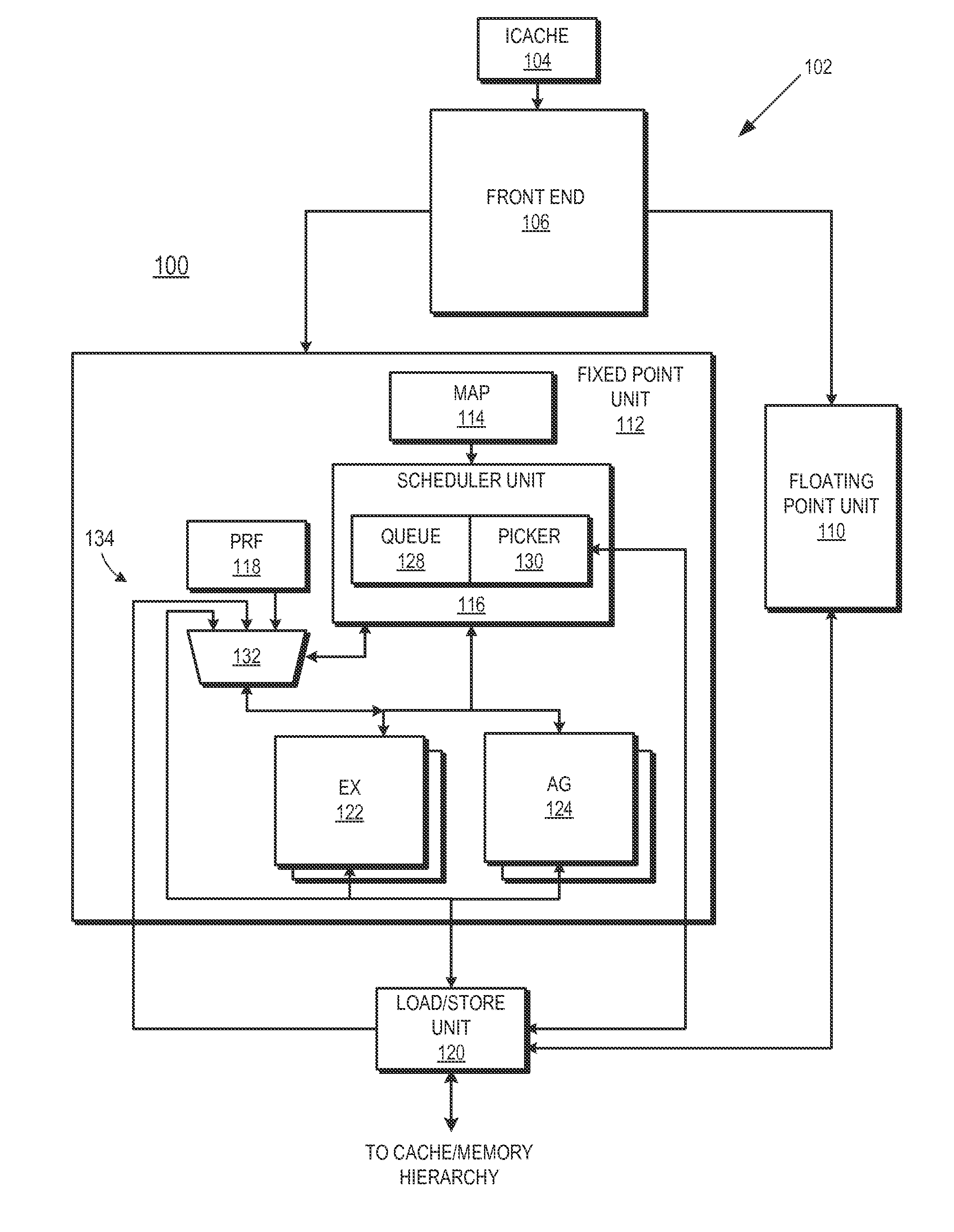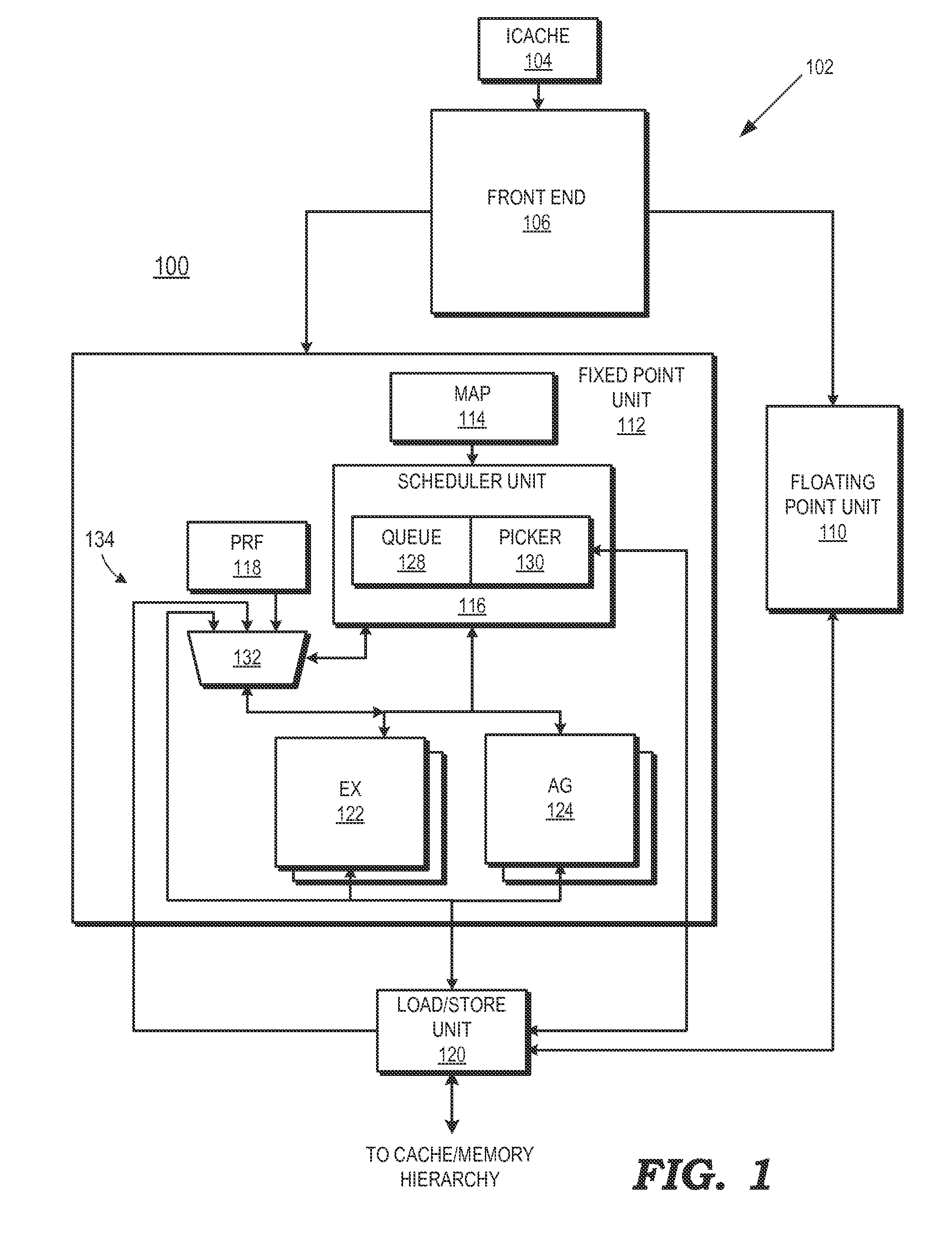Dependent instruction suppression in a load-operation instruction
a load-operation instruction and dependent instruction technology, applied in the field of processors, can solve the problems of speculatively executed load instructions generating invalid, negatively affecting processor performance and power consumption,
- Summary
- Abstract
- Description
- Claims
- Application Information
AI Technical Summary
Benefits of technology
Problems solved by technology
Method used
Image
Examples
Embodiment Construction
[0014]FIGS. 1-5 illustrate example techniques for suppressing the execution of an operation portion of a load-operation instruction in situations where the load portion of the load-operation instruction returns an invalid status prior to scheduling of the operation portion.
[0015]A processor may attempt to improve performance by speculatively executing instructions. In a speculative processor, dependent instructions of load instructions are typically made eligible for execution prior to identifying whether the status of the load instruction is valid or invalid. Thus, the dependents of the load instruction are made eligible for execution when the load instruction is scheduled for execution. If the load instruction returns an invalid status, the dependents that were speculatively executed would also necessarily have invalid status, as they would have operated using invalid data.
[0016]In some processor architectures, a load operation and an arithmetic operation may be combined into a si...
PUM
 Login to View More
Login to View More Abstract
Description
Claims
Application Information
 Login to View More
Login to View More - R&D
- Intellectual Property
- Life Sciences
- Materials
- Tech Scout
- Unparalleled Data Quality
- Higher Quality Content
- 60% Fewer Hallucinations
Browse by: Latest US Patents, China's latest patents, Technical Efficacy Thesaurus, Application Domain, Technology Topic, Popular Technical Reports.
© 2025 PatSnap. All rights reserved.Legal|Privacy policy|Modern Slavery Act Transparency Statement|Sitemap|About US| Contact US: help@patsnap.com



